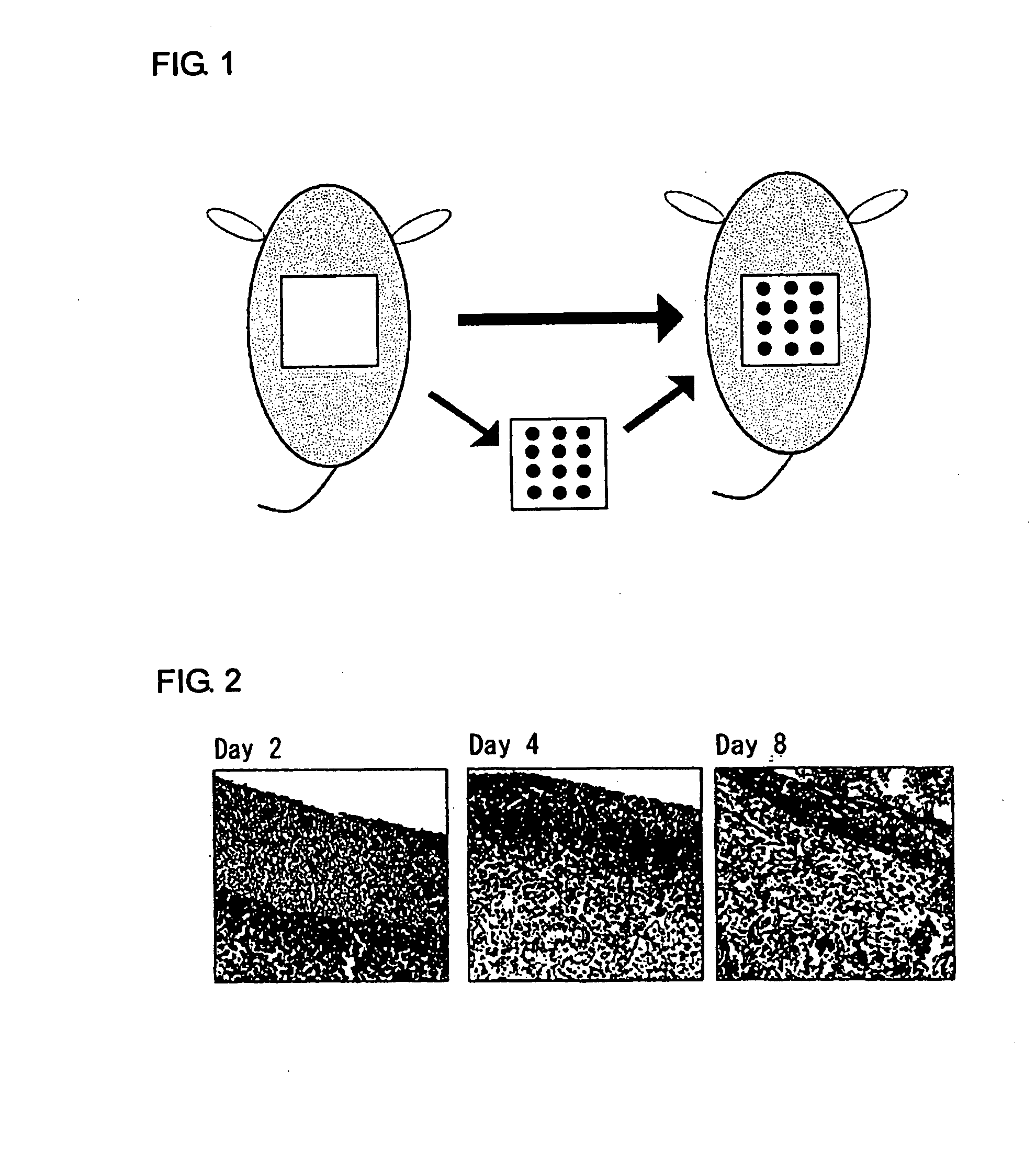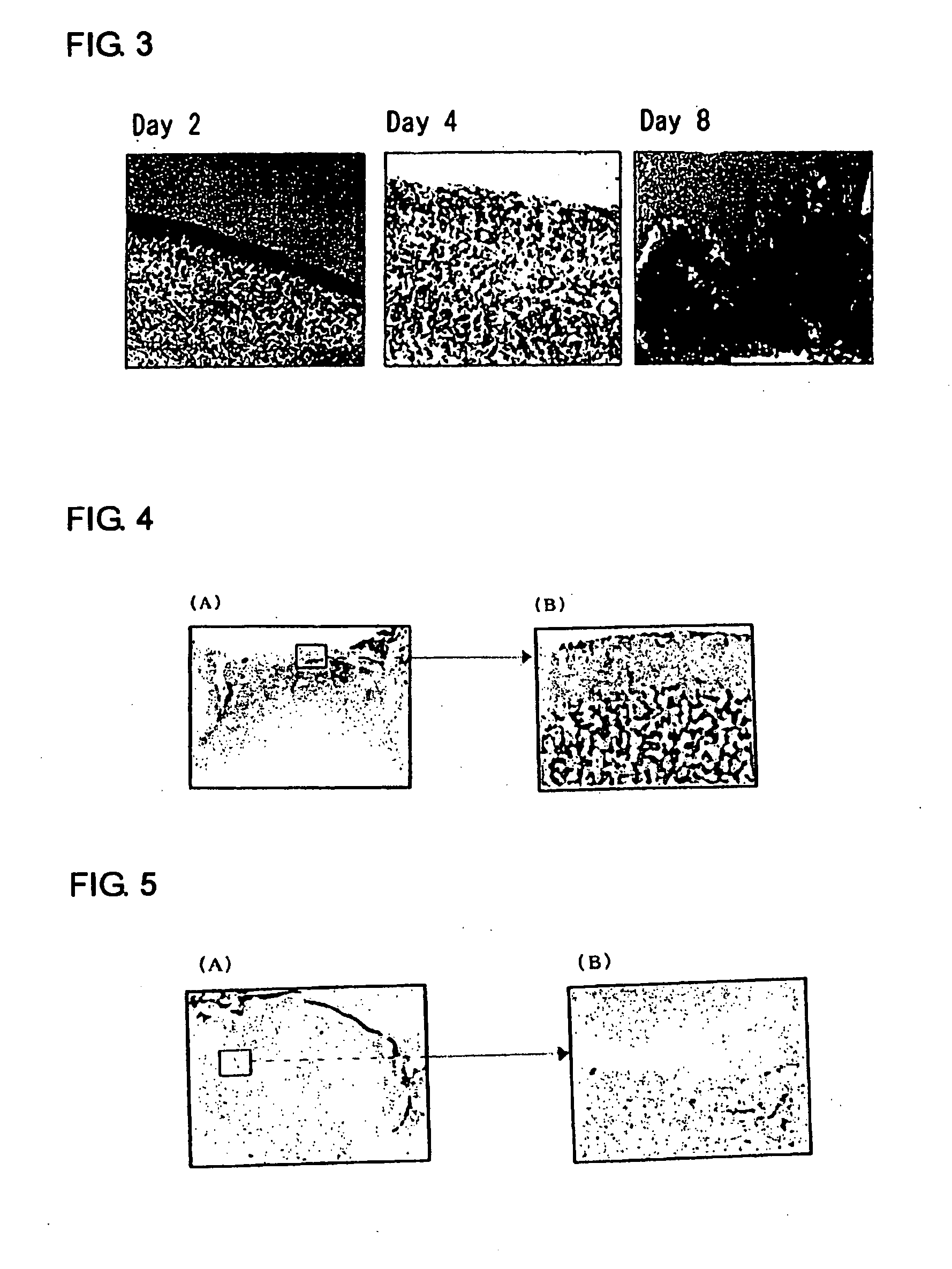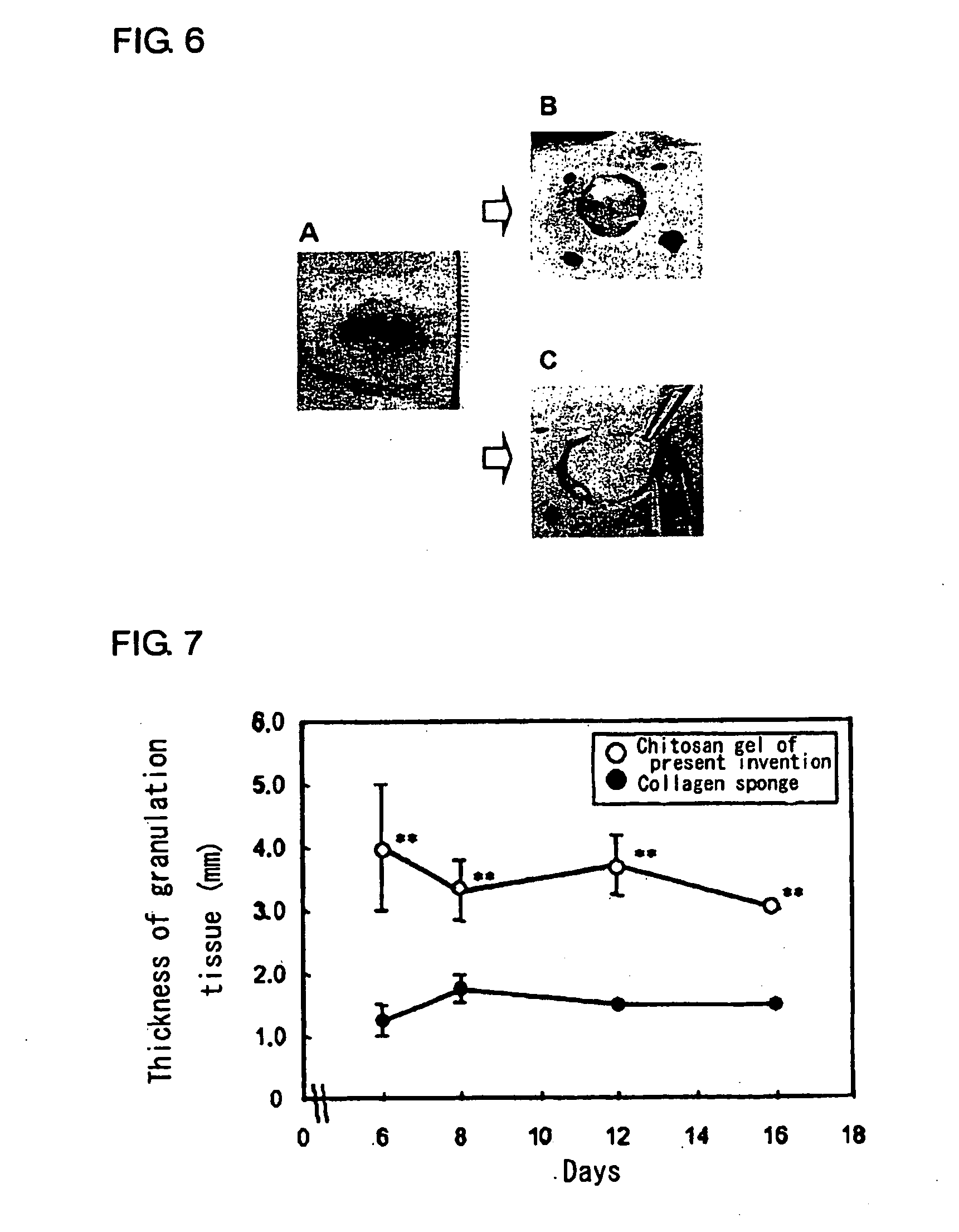Medical composition for promotion of skin regeneration
a technology of medical composition and skin regeneration, applied in the direction of drug composition, prosthesis, peptide/protein ingredients, etc., can solve the problems of inability to completely regenerate the skin, never been a coating or single component agent which is effective, and no technique capable of facilitating and inducing epithelialization, etc., to achieve easy operation, prevent infection of the wound area, and eliminate the problem of impediment during replacemen
- Summary
- Abstract
- Description
- Claims
- Application Information
AI Technical Summary
Benefits of technology
Problems solved by technology
Method used
Image
Examples
synthesis example 1
Synthesis of Photo-Crosslinkable Chitosan Derivative (PRC)
[0078]PRC wherein an ultraviolet reactive group and a carbohydrate chain were introduced into a chitosan backbone structure was synthesized in accordance with the method described in WO00 / 27889. More specifically, azide (p-azide benzoate) and lactose (lactobionic acid) were introduced by condensation reaction into an amino group of crab-derived chitosan having 800 to 1,000 kDa of molecular weight and 85% of deacetylation degree (available from Yaizu Suisankagaku Industry Co., Ltd.). It was confirmed that the resultant was soluble in neutral pH due to introduction of lactose, and substitution degrees of p-azide benzoate and lactobionic acid were about 2.5% and 5.0%, respectively.
[0079]Further, when chitosan materials derived from crab shell and a chitosan material derived from cuttlefish cartilage were used, similar derivatives could be synthesized.
synthesis example 2
Synthesis of Photo (Visible Light) Cross-Linkable Chitosan Derivatives (VL-RC)
[0080]Methyl-4-[2-(4-formylphenyl)ethenyl] pyridine methosulfonate (FPP) expressed by the following formula was synthesized in accordance with the method described in Journal of Polymer Science: Polymer Chemistry Edition, Vol. 20, 1419-1432 (1982).
[0081]More specifically, under the condition of cooling with ice, a solution of γ-picolline (3.07 g, 33 mmol) in methanol (8.3 ml) was added to dimethyl sulfate (4.16 g, 33 mmol). After the solution was left for 1 hour at room temperatures, terephthalic aldehyde (13.4 g, 100 mmol) was added to the solution and dissolved therein by heating. Subsequently, piperidine (0.47 ml) was added, and refluxed for 5 hours. A separated substance was removed by heating filtration. A hot filtrate was mixed with a mixed solvent of ethanol (50 ml) and acetone (16.7 ml), which was left overnight at room temperature. A yellow separated substance was batched off by filtration, which ...
example 1
[0082]Loss of full-thickness skin layers having an area of 3 cm×3 cm was artificially created on the back of rats. The removed skin was taken as an autodermic graft specimen and 12 holes of 5 mm diameter were created on the graft specimen.
[0083]The graft specimen was then placed on portions where the loss of full-thickness skin was created and results were evaluated with the following items in the cases where: (A) it was left without any actions; (B) the graft specimen was sutured; (C) a conventional medical adhesive (cyano acrylamide type, product name: Dermabond (Johnson & Johnson K.K.) was filled in the hole; and (D) the composition of the present invention was filled in the hole and then irradiated by UV (wavelength 330 nm for 15 seconds). The results are shown in Table 1.
TABLE 1(A)(B)(C)(D)(1) Time needed for treatment (min.) 0.810.8 5.5 7.9(2) Adhesion rate of graft specimen (%) (a)69.497.2100.091.7(3) Granulation around graft specimen (b)(+)(+)(−)(+)(a) Adhesion rate: The num...
PUM
| Property | Measurement | Unit |
|---|---|---|
| concentration | aaaaa | aaaaa |
| concentration | aaaaa | aaaaa |
| concentration | aaaaa | aaaaa |
Abstract
Description
Claims
Application Information
 Login to View More
Login to View More - R&D
- Intellectual Property
- Life Sciences
- Materials
- Tech Scout
- Unparalleled Data Quality
- Higher Quality Content
- 60% Fewer Hallucinations
Browse by: Latest US Patents, China's latest patents, Technical Efficacy Thesaurus, Application Domain, Technology Topic, Popular Technical Reports.
© 2025 PatSnap. All rights reserved.Legal|Privacy policy|Modern Slavery Act Transparency Statement|Sitemap|About US| Contact US: help@patsnap.com



